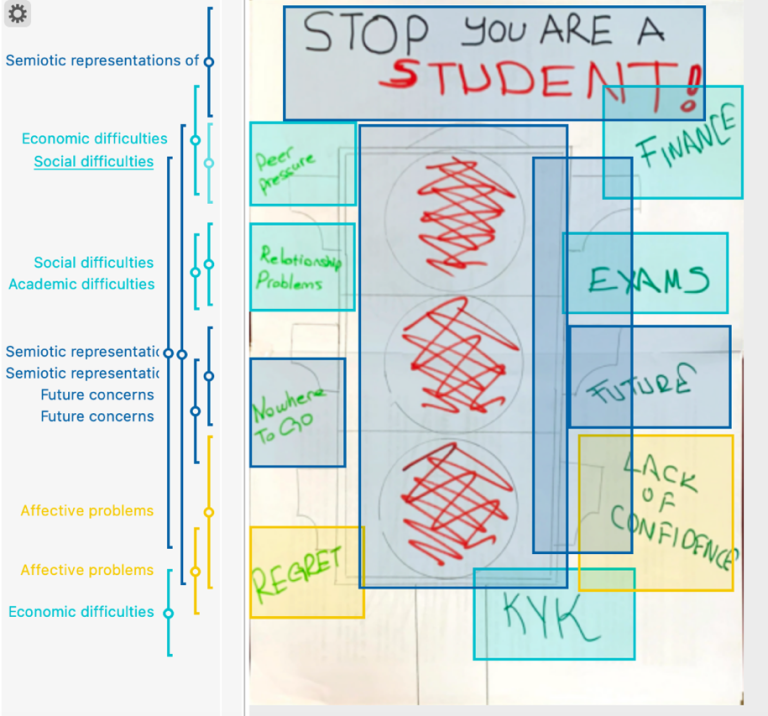Action Research: Untangling the Gordian Knot
This blog is part of the TESOL Research Professional Council (RPC) Blog series.
I have been teaching English as a foreign language since 2010, and I have been actively involved in TESOL research since 2014 when I started my graduate studies. TESOL’s Research Agenda has made it clear that TESOL practitioners are concerned both with instructional issues and societal problems yet experience challenges in engaging in research as a part of their everyday teaching practices.
As I learned more about action research, I felt like I had found the avenue to answers for the “burning questions” (Burns, 2010, p. 28) in my practice. However, when I started my first action research study, I saw that it produced a new problem—how could I position myself both as a researcher and a teacher? That was my Gordian Knot, an ancient legend coming from my land, Turkey. According to the legend, the Gordian Knot was an impossibly tangled knot, and the one to solve it would rule all knowledge. For me, the notion of practitioners conducting research was just as tangled. However, I encountered an unexpected ally that empowered me as both a practitioner and a scholar in the field.
During my doctoral studies, I was introduced to qualitative data analysis (QDA) software, designed to help researchers systematize qualitative data. The software supported not only a robust approach to action research, but also the shift in my understanding of practitioner research in three ways.
Managing and Systematizing the Data Pile
Teaching “lends itself naturally to data collection” (Burns, 2010, p. 54); almost everything from school documents to students’ work constitutes data. The QDA software helped me to manage the data pile, connect different data sources, and understand the multimodal opportunities afforded by action research. For example, the picture in Figure 1 is a screenshot from the QDA software interface that shows how I coded a group work activity product.

Figure 1. Visual example of coding. (Ustuk, in press)
Collaborating With Scholars and Teacher Educators
A nonhierarchical relationship between applied linguistics researchers and TESOL practitioners has been recommended in TESOL circles (e.g., Mckinley, 2019; Rose, 2019). Most QDA software provides ways to collaborate with other researchers. I built such a lateral relationship with senior applied linguists in this project, and at the same time developed a sense of ownership and became the creator of educational knowledge (Dikilitaş & Griffiths, 2017). Collaborating through QDA with others, which was not as complicated as I had thought it would be, empowered me as a teacher/researcher.
Visualizing My Findings
Data analysis in action research can be a daunting experience. For me, data analysis was demystified by the visualization opportunities that come with QDA software. Visualization made it easier for me to achieve my main objective—to reflect critically upon my teaching experiences and improve my practice while building connections between codes and code groups. Visualizing such connections helped me grow my reflective stance as a practitioner.
Ultimately, one of the biggest challenges—analysis of qualitative data—turned out to be the most empowering one with the help of the software. The process empowered me to make a shift in stance from PhD candidate to teacher/researcher. I cannot say that I was Alexander the Great, and software was the sword that I used to slice the Gordian Knot. Instead, I used the software to work on the knot, untangling it by little parts, to solve the mysteries of everyday TESOL through action research.
References
Burns, A. (2010). Doing action research in English language teaching: A guide for practitioners. Routledge.
Dikilitaş, K., & Griffiths, C. (2017). Developing language teacher autonomy through action research. Springer International Publishing. https://doi.org/10.1007/978-3-319-50739-2
Mckinley, J. (2019). Evolving the TESOL teaching–research nexus. TESOL Quarterly, 53(3), 875–884. https://doi.org/10.1002/tesq.509
Rose, H. (2019). Dismantling the ivory tower in TESOL: A renewed call for teaching-informed research. TESOL Quarterly, 53(3), 895–905. https://doi.org/10.1002/tesq.517
Uştuk, Ö. (forthcoming). Pretexts: Igniter materials of dramatic elsewhere in EFL classrooms. In D. LaScotte, C. S. Mathieu, & S. David (Eds.), New perspectives on material mediation in language learner pedagogy. Springer.

About the author
Özgehan Uştuk
Özgehan Uştuk (PhD) is an EFL teacher, teacher educator, and trainer in MAXQDA data analysis software. He currently works at Balikesir University, Turkey as a research assistant. His research areas include drama-in-education, TESOL teacher education, professional development, identity, and emotions. He has participated in several action research projects and conducted his own action research studies.